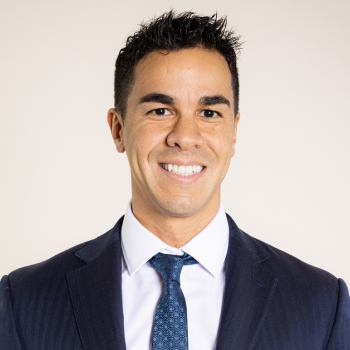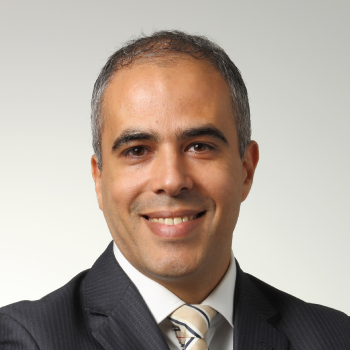
Emerging Markets Equities: an active approach focusing on quality and sustainable growth



The landscape for emerging market investing has been evolving over the last years. What are some of the changes that you would like to highlight?
The weight of cyclicals in the emerging markets (EM) is less important. In the last decade, EMs have significantly improved productivity through innovation and technology, especially in North-Asian nations such as China, Taiwan and South Korea. These have given us world leaders in technology from semiconductors to green energy transition and mobility, increasing the representation in the EM investment universe of both the nations and the tech sectors. While less dominant, the ‘traditional’ sectors remain important. So we view the current industries in EM as more balanced.
The second underappreciated factor is the spending potential of the rising middle class. In 2021, Chinese consumers alone represented almost 35% of total global luxury[1] spending. This will only continue to increase. So the EMs have transitioned from export-oriented regions to domestic consumption markets. As in the Developed Markets, climate change and decarbonization will also be growth areas.
With the rapid rise in index investing, what is the case for active investing in Emerging Markets?
There are tremendous growth and value creation opportunities, yet EMs Equities remain a diverse and inherently a more volatile asset class. This creates an opportunity for active investing. For example, during the Covid-related correction active managers were able to increase their exposure to technology and workfrom-home beneficiaries.
What are the long-term drivers for investing in EMs?
We would highlight three key factors-growth opportunities, improving fundamentals, and increasing inclusion of the EM equity asset class in diversified portfolios. Structural growth opportunities remain because of rising middle class, more attractive demographics relative to Developed Markets, and increasing adoption of technological advancements. Fundamental of EM economics should also be improved by targeted stimulus, making the EM growth outlook more attractive in relative terms. External trade positions are improving in several countries, especially commodity exporters.
Emerging Equities are underrepresented as in many global equities portfolios. EM countries
represent almost half of global GDP, and more than half of GDP growth, yet they represent less than 15%[2] of the MSCI World ACWI Index©[3]. We believe this creates an opportunity as the gap between relevance to global GDP and the proportional weight in global indexes narrows.
EM equities add diversification benefits to balanced portfolios. Further, if globalization has peaked and economies become less interconnected, returns should become less correlated among national markets. Economic downturns in one country or region can be offset by growth in another, which makes active investing so valuable.
What sets the Candriam approach apart?
Our approach is designed to identify ‘pockets of growth’ through a bottom-up[4] investment process which aims at deliver consistent, risk-adjusted outperformance, but which is also robust in times of volatility. Our investment process is a combination of proprietary stock screening and analysis with a thematic overlay. It is based on our belief that inefficiencies in EMs can create opportunities at the individual security level.
We seek companies which can grow profit more efficiently than their country and sector peers, have a leading and competitive market position and generate strong and sustainable organic growth, increasing the potential of multiple expansion. While the index is based of 3 000 lines, the portfolio tends to include around 100 conviction-based positions[5].
Our bottom-up approach is allied to a thematic investment approach. We seek local, cross border, and cross-sector investable market trends and pockets of growth, rather than a traditional top-down[6] country or sector allocation. Therefore our asset allocation to local markets can deviate from the weightings of market indices.
An additional strength is our stable, dedicated and experienced Emerging Markets teams, both equity and debt, which have a track record and experience spanning nearly two decades.
Can you elaborate how you integrate sustainable investing in your approach?
What we have is a multi-faceted approach of ESG (Environmental, Social & Governance)
analysis[7] for companies in the emerging markets. The strategy, we manage take into account ESG considerations to different degrees, with Candriam as a leading player in this field. This strategy is ESG-aware (exclude certain industries such as coal, tobacco, controversial armament while the sustainable strategy only invests in a universe of pre-approved stocks. On the aspect of avoiding controversies and harm aspect (reputational risk), we have robust exclusion screens on controversial products and activities and norm based exclusion for companies at risk of violation of UN global compact principles.
What type of investors might consider this strategy?
Our strategy is most suitable for investors seeking risk-adjusted active management of Emerging Markets equities. In other words, investors who want to take some, but not exaggerated, exposure to EM index risk.
While many EM strategies are value-driven, we have a flexible investment style with a bias towards quality and growth, intended to lead to higher risk adjusted returns over the mid to longer term.
Emerging Markets Equities: an active approach focusing on quality and sustainable growth

Paulo Salazar, Philip Scrève and Lamine Saidi give insights on sentiment towards emerging markets and describe how they search for pockets of growth.
Discover more
[1] Source: JPM MI, https://am.jpmorgan.com/content/dam/jpm-am-aem/global/en/insights/market-insights/guide-to-the-markets/mi-guide-to-the-markets-us.pdf
[2] All rights reserved.
[3] Indicative data subject to change over time.
[4] Bottom-up refers to the stock selection process based on individual analysis rather than broader considerations (global economy, sector, region).
[5] Indicative data which may change over time.
[6] Top-down allocation is driven by investment views on global economy, gradually narrowing down to regions, countries and sectors.
[7] ESG analysis for companies is applied to at least 90% of the strategy’s investments excluding deposits, cash and index derivatives. The fund only considers sectors that are not excluded by the Candriam Exclusion Policy, which can be found at https://www.candriam.fr/fr/private/market-insights/sri-publications/
The main risks of the strategy are
- Risk of capital loss
There is no guarantee for investors relating to the capital invested in the sub-fund in question, and investors may not receive back the full amount invested. - Equity risk
Some strategies may be exposed to equity market risk through direct investment (through transferable securities and/or derivative products). These investments, which generate long or short exposure, may entail a risk of substantial losses. A variation in the equity market in the reverse direction to the positions can lead to the risk of losses and may cause the performance to fall. - Emerging market risk:
Market movements can be stronger and faster on these markets than on the developed markets, which could cause the performance to fall in the event of adverse movements in relation to the positions taken. Volatility may be caused by a global market risk or may be triggered by the vicissitudes of a single security. Sectoral concentration risks may also be prevalent on some emerging markets. These risks may also heighten the volatility. Emerging countries may experience serious political, social, legal and fiscal uncertainties or other events that could have a negative impact on the strategies investing in them. In addition, local depositary and subcustodial services remain underdeveloped in non-OECD countries and emerging countries, and transactions carried out in these markets are subject to transaction risk and custody risk. In some cases, it may be impossible to recover all or part of the assets invested or delays in delivery when recovering assets may arise. - Foreign exchange risk:
Foreign exchange risk derives from the strategy’s direct investments and its investments in forward financial instruments, resulting in exposure to a currency other than its valuation currency. Changes in the exchange rate of this currency in relation to that of the strategy may negatively affect the value of assets in the portfolio.
The risks listed are not exhaustive, and further details on risks are available in regulatory documents.
